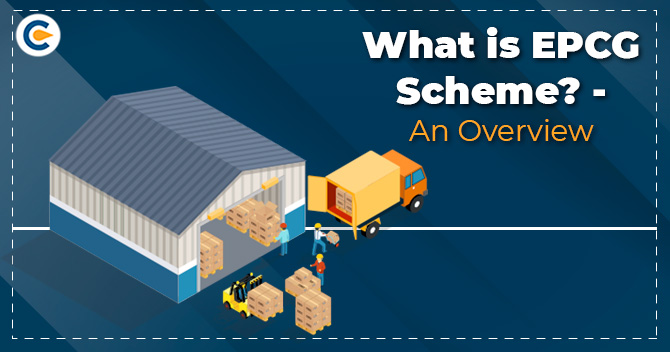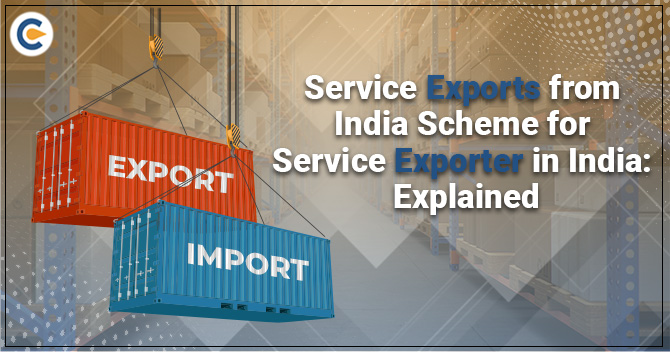EPCG Scheme or Export Promotion Capital Goods Scheme aids in facilitating the import of capital goods for manufacturing quality products and to enhance the competitiveness of India’s Export. EPCG scheme permits the import of capital goods that are used in the pre-production, production & post-production without customs duty charge.
In simple words, EPCG Scheme can be explained as Duty-Free or Zero Customs Duty import of capital goods or machinery for the manufacture of products meant for Export. We already know that the heavy custom duties companies have to pay on the capital goods or machinery imported for the production requirements, due to which businessmen generally don’t import them and compromise with the quality of the products. The higher the machinery price used to be, the higher the custom duty was and this functionality started affecting the competitiveness & quality of manufacturing industries deeply. So to improve this situation, the Indian Government introduced this EPCG Scheme where it was allowed or permitted to import capital goods at zero customs duty. The primary objective of the EPCG Scheme is to improve the competitiveness of India in the manufacturing sector.
Who can avail of benefits from the EPCG Scheme?
EPCG is aimed to promote exports and the Indian Government though this scheme provides incentives and other financial assistance to exporters. Heavy exporters could benefit from this provision. But, it’s not advisable to go ahead with EPCG Scheme for those who don’t expect to manufacture in quality or expect to sell the product completely within the country, as it could become almost impossible to accomplish the obligations set under this scheme.
What kind of Goods/Machinery for Import does EPCG Scheme apply to?
- All the Computer systems and software included in the capital goods that are imported;
- All the capital goods comprising semi-knocked down and complete-knocked down conditioned goods;
- Catalysts for initial charge along with one ensuing charge;
- Jigs, tools, spares, dies, moulds, and refractories.
As per FTP 2015-20, Capital goods are defined as any plant, equipment, machinery or accessories required for production or manufacture, either indirectly or directly, of goods or for rendering services, comprising those required for replacement, technological up-gradation, modernisation or expansion. It comprises packaging equipment & machinery, refrigeration equipment, machine tools, power generating sets, equipment, and instruments for testing, R&D, quality & pollution control.
Capital goods may be used in mining, manufacturing, aquaculture, floriculture, pisciculture, sericulture, animal husbandry, poultry, horticulture, and viticulture & for use in the services sector.
Who can apply for EPCG Scheme?
Benefits under EPCG Scheme can be availed by any exporter irrespective of their turnover. EPCG License can be granted to the following exporters category:
- Manufacturer Exporter;
- Merchant Exporter with a supporting manufacturer;
- Service Provider (who is exporting services), e.g., Hotel Industry.
What are the Export Obligations under EPCG Scheme?
There are two types of export obligations under the EPCG Scheme:
- Specific Export Obligation: Goods manufactured from the imported machinery to be exported worth six times of the taxes, duties, and cess saved on the capital goods within six years from the issuance date of EPCG Authorisation. In the case of original sourcing of Capital Goods, specific Export Obligation shall be 25% less than the above Export Obligation.
- Average Export Obligation: This obligation is the most vital of the two export obligations under the EPCG Scheme. It generally means that the average turnover maintained in the past three years before getting the license must be maintained for each Financial Year until the specific export obligation is completed. It’s imposed with a view that after the obligation is completed. It’s imposed with a view that after upgradation & induction of new machinery, the overall Export shouldn’t fall below the past average of turnover accomplished i.e., there should be an increase in the export turnover with the aid of new machinery. It’s to be maintained over and above the specific export obligation.
If the Export Obligation is not fulfilled in six years, one extension of two years can be attained based on case to case basis. If the holder of EPCG Authorisation fails to get the EO (even after extension), the organisation has to pay all the cess, taxes, customs duties, saved plus 15% annual interest to the Customs Authority. The EO can be fulfilled by deemed exports, EOU Units, supply to SEZ, etc., 3rd party exports, service exports in the case of service providers.
Remember: If the EPCG License holder aims to pay the IGST & compensation cess while importing, then the total duty saved amount would be reduced accordingly, which will, in turn, reduce the obligation. But, this facility can only be availed on the condition that the tax credit of IGST will not be taken by the Exporter.
Documents Required for Obtaining EPCG License
Following are the documents required for obtaining EPCG License and ANF 5B is to be filled along with self-certified copies of the following:
- IEC or Import Export Code;
- Digital Signature;
- PAN Card;
- Brochure;
- RCMC or Registration Cum Membership Certificate;
- Registration Certificate from Tourism Department;
- Proforma Invoice;
- Excise Registration (if registered);
- Self-certified copy + original certificate of AC;
- Self-certified copy + original certificate of Chartered Engineer;
- GST Registration Certificate.
How to apply for an EPCG License Online?
The candidate or applicant must submit an online application to DGFT[1] to obtain EPCG License; please follow the steps given below:
- First, you have to visit the DGFT official website;
- Then you have to log in with DSC;
- Then select services and file online E-com Application;
- Click on EPCG (0%);
- Fill out all the information and upload the vital documents;
- Kindly note that the following vital points to be noted to ensure the documents are prepared error-free:
- IEC or RCMC must show the applicant as a manufacturer exporter;
- IEC or RCMC should have the address where the machine is proposed to be installed;
- SSI or MSME or Manufacturing proof must have the export products listed in the EPCG License.
- After filling all the information, submit the application;
- After a successful application, DGFT will issue the EPCG License.
Penal Sanctions
Unawareness of the law is not an explanation, and violation carries strict penal sanction. It has been said that it’s easy to make money lawfully & ethically and so someone who recourses to underhanded means & methods to do that is really being ignorant and acting foolish & will not enjoy the fruits of their labour. One has to factor in the risk of getting caught and the fear of having a tarnished conscience that seeks to flout the law that will unavoidably follow. It’s better to make a hard-earned profit any day, and when there are such abundant chances for the same, whoever doesn’t make use of legal means is unintentionally admitting failure & lowering expectation in himself and his own estimation of their merits, worth, and talent. Business ought not then to seek to avoid fulfilling their obligation if they do take it up.
Conclusion
Export Promotion Capital Goods are capital goods used in the production of products that are exported to other nations. It comprises machinery and spares. Therefore, to qualify as EPCG, the commodity manufactured in India should be exported outside India.
Read our Article:How to Secure LMPC Certificate to Import Pre-packaged Goods in India?













